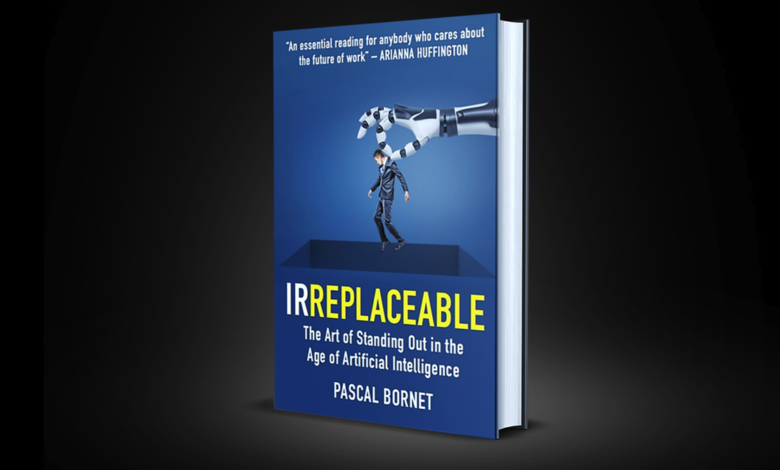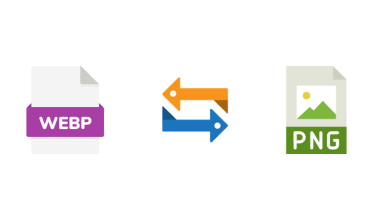
Tom Allen (TA): Your book “IRREPLACEABLE” discusses thriving in the age of AI. What inspired you to write it?
Pascal Bornet (PB): You know, this book came from two places. First, I’ve spent over 25 years leading AI implementations around the world, and one thing has become crystal clear to me: the true value of AI isn’t in the technology itself, it’s in how humans interact with it. Time and time again, I’ve seen that the companies and individuals who thrive with AI are those who put the human element front and center. They focus on education, communication, and managing change effectively. Without this human touch, AI projects often fail, and people end up fearing the technology rather than embracing it.
The second big inspiration was the sheer pace of change we’re seeing. It’s not just that things are changing – it’s that the rate of change itself is accelerating. We’re witnessing technological progress at a speed that’s frankly unprecedented. As someone who’s been in this field for a long time, I felt a real responsibility to help both individuals and organizations navigate this new landscape. I didn’t want anyone to be left behind.
So, I wrote this book to offer practical guidance and strategies for success in this new AI-driven world. It’s for everyone – from CEOs trying to steer their companies through digital transformation, to individuals wondering how to future-proof their careers.
TA: That’s fascinating. Can you explain what it means to be IRREPLACEABLE in the context of AI, both for individuals and companies?
PB: Absolutely. Being IRREPLACEABLE is really about ensuring that AI complements and enhances our human capabilities, rather than replacing them. It’s a concept that applies both to individuals and to organizations.
For individuals, being IRREPLACEABLE means developing the ability to handle high levels of change and disruption with calm and confidence. It’s about leveraging AI to augment your skills and automate routine tasks, while also being aware of the potential risks, like privacy concerns or ethical issues. But perhaps most importantly, it’s about developing those uniquely human abilities that AI simply can’t replicate. We’re talking about genuine creativity, critical thinking, emotional intelligence – what I call the “Humics.”
For companies, being IRREPLACEABLE takes on a slightly different flavor. It’s about creating an organizational structure and culture where AI and humans complement each other perfectly. IRREPLACEABLE companies can navigate rapid technological and market changes with resilience. They leverage AI at scale to boost revenue and streamline operations, but they do it while building trust and effectively managing risks around fairness, transparency, and privacy.
The key for both individuals and companies is to find that sweet spot where human abilities and AI capabilities come together to create something greater than the sum of its parts. It’s not about humans versus AI, it’s about humans and AI working in concert to achieve things neither could do alone.
TA: You mention “Three Competencies of the Future” in your book. How do these apply to both individuals and businesses?
PB: The Three Competencies of the Future are really the pillars of being IRREPLACEABLE, whether you’re an individual or a large corporation. Let me break them down for you.
First, we have AI-Ready. For individuals, this means understanding AI well enough to use it effectively in their work. You don’t need to become a programmer, but you should know what AI can and can’t do in your field. For businesses, being AI-ready goes a step further. It’s about developing a deep understanding of AI technologies, their potential impacts, and how to integrate them into business processes. It also involves being proactive about addressing potential ethical issues or risks.
The second competency is Human-Ready. This is all about doubling down on what makes us uniquely human. For individuals, it means cultivating your “Humics” – those abilities like genuine creativity, critical thinking, and social authenticity that AI can’t replicate. For businesses, being Human-Ready involves creating an environment that nurtures these human skills. It’s about designing roles and processes that leverage the best of both human and AI capabilities.
The third competency is Change-Ready. In today’s world, the ability to adapt is crucial. For individuals, this means being willing to continuously learn, unlearn, and relearn. It’s about seeing change as an opportunity rather than a threat. For businesses, being Change-Ready involves creating strategies and cultures that thrive on disruption. It’s about building flexibility and adaptability into the very DNA of the organization.
These competencies aren’t separate – they work together as a unified framework. And they’re not just nice-to-haves. In our rapidly evolving world, they’re becoming essential for both personal and organizational success.
TA: That’s a lot to take on. How can individuals and companies develop these competencies effectively?
PB: You’re right, it is a lot. But in my experience, the people and companies that are really thriving in the AI era are the ones tackling all of these competencies head-on. Let me give you some practical advice for both individuals and organizations.
For individuals, start by dedicating time each week to learning about AI developments in your field. Experiment with AI tools relevant to your work. But don’t stop there – also invest time in activities that spark creativity and critical thinking. Take on projects that challenge you to think outside the box. Practice empathy and authentic communication in your interactions.
For companies, it’s about creating a culture and infrastructure that supports these competencies. Invest in comprehensive AI literacy programs for employees at all levels. Establish dedicated AI teams or centers of excellence. But remember, it’s not just about the tech – also focus on creating an environment that nurtures human skills. Redesign jobs to emphasize tasks that require creativity, emotional intelligence, and complex problem-solving.
For both individuals and companies, developing change readiness is crucial. Seek out new experiences that push you out of your comfort zone. Foster a culture that sees failure as a learning opportunity. Engage in scenario planning to anticipate future disruptions.
Remember, developing these competencies isn’t a one-time thing. It’s an ongoing process that requires commitment and consistent effort. But the payoff – becoming truly IRREPLACEABLE in the age of AI – is worth it.
TA: You introduce the concept of “AI obesity” in your book. How does this apply to both individuals and businesses and why should they be concerned about it?
PB: AI obesity is a concept that’s really resonated with both individuals and business leaders. Essentially, it refers to an excessive reliance on AI technologies at the expense of human capabilities. It’s like an organizational or personal version of muscle atrophy – when you stop using certain skills, you start to lose them.
For individuals, AI obesity might manifest as over-reliance on AI tools for tasks that traditionally require human judgment or creativity. Think of always using an AI writing assistant and losing the ability to craft compelling narratives on your own, or constantly deferring to AI for decision-making without applying critical thinking.
For businesses, AI obesity can occur when organizations become overly dependent on AI for processes and decision-making, potentially neglecting or undervaluing the uniquely human skills within their workforce. This might seem efficient in the short term, but it can lead to a loss of innovation, decreased adaptability to unprecedented situations, and erosion of the human touch that often differentiates great companies.
The concern here is multifaceted. For individuals, AI obesity can lead to skill degradation, making you less valuable in areas where human insight is crucial. For businesses, it can result in losing competitive edge, decreased innovation, and potential ethical missteps if human judgment is removed from important decisions.
Moreover, AI obesity can impact our humanity on a broader scale. If we satisfy ourselves with AI’s capabilities and neglect our Humics, we risk losing touch with the very things that make us human – our creativity, our ability to connect deeply with others, our capacity for nuanced ethical reasoning.
The key to avoiding AI obesity for individuals and businesses is to strive for that IRREPLACEABLE status we discussed earlier. It’s about strategically combining human and AI capabilities, rather than simply replacing human skills with AI. Use AI as a tool to enhance your abilities, not as a crutch. Regularly exercise your “mental muscles” by taking on challenges without AI assistance. Focus on developing skills that AI can’t easily replicate.
For businesses, it’s about creating a symbiosis between AI capabilities and human skills. Design workflows and processes that leverage the best of both. Invest in developing your employees’ Humics alongside their AI literacy.
Remember, the goal isn’t to shun AI but to use it to enhance rather than replace our unique human capabilities. By doing this, we’re not just avoiding AI obesity – we’re making ourselves and our organizations truly IRREPLACEABLE.




